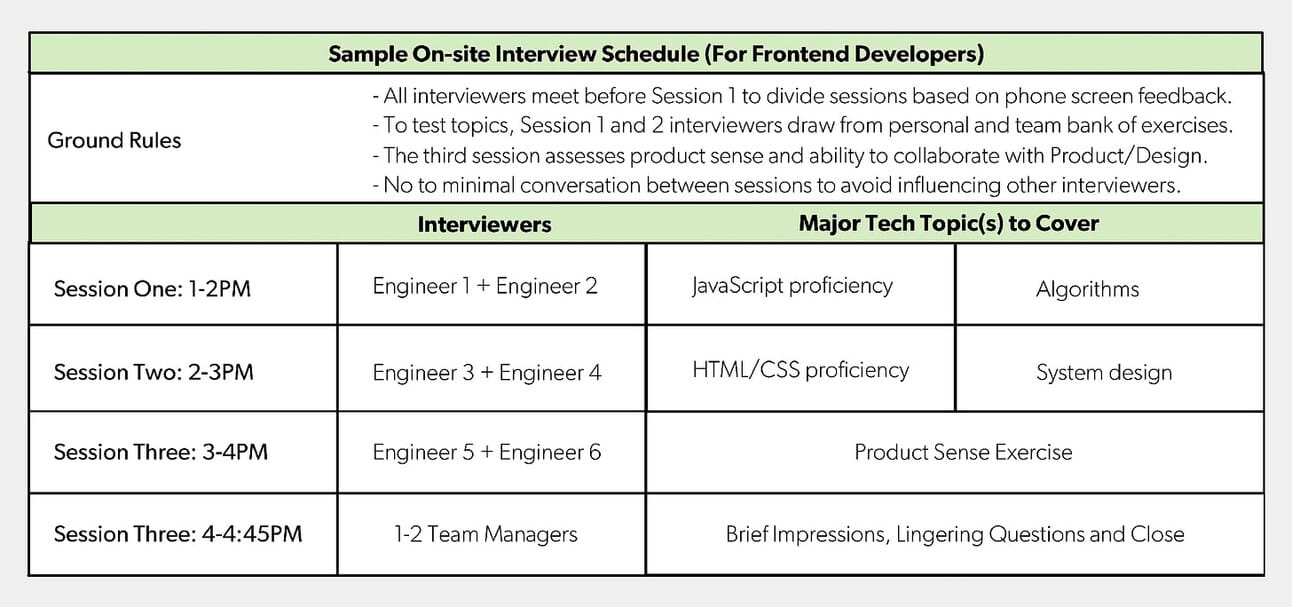Managing Teams
My Lessons from Interviewing 400+ Engineers Over Three Startups - Marco Rogers, First Round Review
Guides to Interviewing at Notion - Notion
Interviewing at GitLab - GitLab
Here we have a collection of interlocking articles and resources on interviewing for technology jobs.
The parallels between startups and research computing are made explicit as often as they should be. There’s a lot of need for tolerating uncertainty - in both cases, people are defining the problem while working on a solution. And with a small team but many changing things to do, everyone has to be adaptable enough to be able to do a little bit of a lot.
In the first article, Rogers talks about his experience hiring 80 developers and ops staff for three startups - and his concern that many organizations don’t view interviewing and hiring as the crucial activities that they are.
Rogers dismisses interviewing purely for technical knowledge and skills - in a startup, as in research computing, you don’t actually know at any given time exactly what skills and technologies you’ll need in the coming years, and technology skills are only one piece of the puzzle anyway. He emphasizes having clear rubrics for hiring that also include questions around ego, adaptability, technical communication skills, and cross-functional collaboration skills.
For running the interviews, he recommends having two interviewers at a time - it allows interviewers to split time between engaging and observing, it helps spot biases, and it helps train new interviewers. He also recommends having the entire team interview, partly to emphasize the importance of interviewing and to communicate widely what is needed for a successful new hire. He also recommends doing more interviews, bringing in ten for each position. Below is an example of how an on-site interview schedule would work for a front-end developer.
Post interview, he recommends having a huddle, getting an initial yes/no (Lever uses strong hire/hire/no hire/strong no hire) and then dig into they why’s to surface and amplify meaningful signal. Before the huddle, it should be clear who is making the decision, and how, so that everyone knows how their input will be used.

Larson’s article also emphasizes the importance of clear, team-wide definitions of goals and rubrics for what a successful hire would look like prior to interviewing - this time for managers or team leads. As we know, manager or lead are particularly tough jobs to nail down, and if you’re having trouble finding candidates everyone can agree on, this could well be why. He also suggests that if you start seeing some common reasons why interviewed candidates are poor choices, to push screening for those causes to phone screens.
Finally, Notion and GitLab have extremely detailed documents describing how interviewing works at those companies. Those are useful not only for us to learn from in designing our own hiring process, but as starting points for candidate packs for those we interview.
Managing Your Own Career
Staying Visible When Your Team Is in the Office…But You’re WFH - Dorie Clark, HBR
Look, in research we’re often pretty uncomfortable emphasizing our abilities or accomplishments. “The work should speak for itself”, we’re told. But that’s transparently nonsense. In 25+ years I’ve seen a lot of work, and not once has any of it pulled me aside and explained its significance to me, nor how it will help me achieve my goals. If your work speaks to you, take a vacation, and if it continues speaking to you, seek professional help.
The fact is, a number of us and our teams are going to be remaining distributed while our managers, stakeholders, and some of our peers go back to offices. And that means to stay visible and on our bosses and stakeholders’ radar we’ll need to have to be a little more intentional about being easy to work with, and for our teams outputs to be obvious. We might not like that, we may even find it distasteful - and, you know, too bad. If you won’t do it for yourself, then suck it up and do it for your team members, whose hard work individually and collectively deserves to be recognized.
Clark recommends:
Making a point of delivering what our managers or stakeholders need
Avoid the default of having just transactional relationships, and make sure there is a real professional relationship being built - peer or stakeholder one-on-ones can be useufl for this
Where feasible, do be physically visible from time to time
Be easy and flexible to work with, to balance how easy it is for them to pop into someone on-site’s office.
Random
xeyes has been updated. It’s now at 1.2, if you’re curious.
Running an Amiga in 2021.